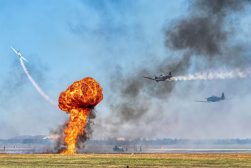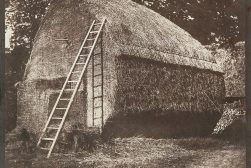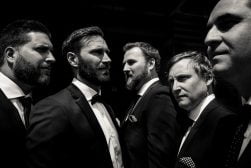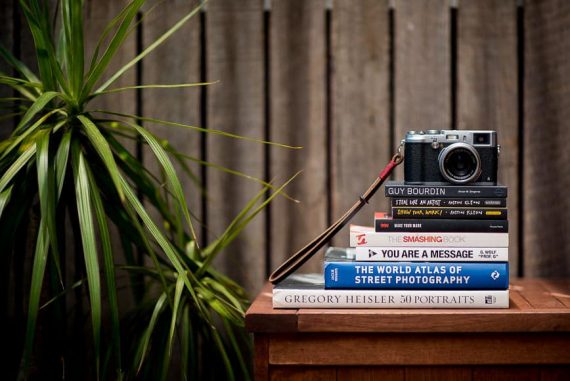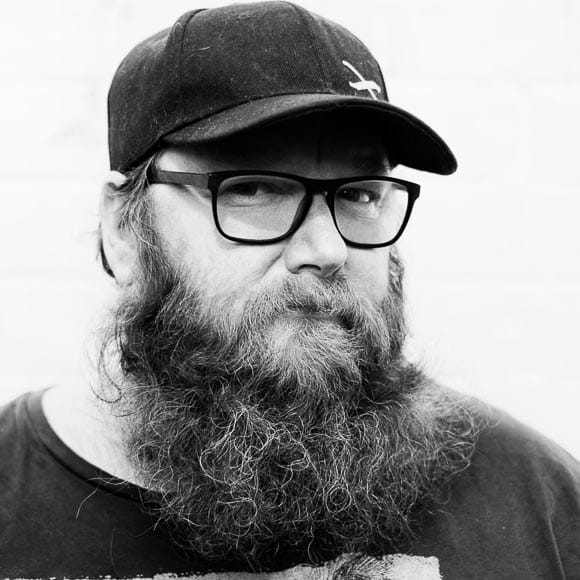
21 Juxtaposition Examples in Photography & Art
Check out these 21 examples of using juxtaposition in photography and art to help you get inspired. Also includes explanations of why they work so well.
Learn | By Greg Cromie
Often we come across terms in photography that confuse us, but it’s nothing to be ashamed of!
Despite how it sounds, juxtaposition is not a new dance move all the kids are into…!
Juxtaposition is actually a term used to describe a compositional technique used in visual media like art, cinema and photography.
According to the dictionary, juxtaposition is “an act of placing two elements close together or side by side, especially for comparison or contrast”.
But how do we relate that to photography and how we compose our photos?
In this guide, we’ll explain how juxtaposition is a powerful compositional technique in visual storytelling. We’ll also provide you with a range of examples of using juxtaposition in photos.
You can learn from the provided examples and master the use of juxtaposition in your photography projects.
This guide is suited to new photographers and those with more experience looking for the next challenge.
Let’s get into it now!
Table of Contents
What is Juxtaposition?
A juxtaposition is a composition tool that we use in photography to connect elements to create a theme or story.
For a juxtaposition to be compelling, it requires two or more contrasting elements within a scene. The elements require a conceptual or physical connection in some way – powerful or subtle.
What’s more, the elements must draw the viewer in to see the greater story and come to an intended conclusion.
In some cases, the appearance of the two visually weighty elements come together by chance. We see this through good timing, luck or by the photographer being in the right place at the right time.
In other situations, the placement of contrasting elements forces the juxtaposition. Some photographers choose to use editing to combine images, force perspective or use mixed media.
While the forced use of juxtaposition results in some visually striking images, it’s the happenstance of juxtaposition occurring naturally that wins the day.
Juxtaposition is also extensively applied in the art world in much the same way.
You can read more about composition in our guide to why composition is important in photography.
17 Examples of Using Juxtaposition in Photos
1. Inanimate and Animated Subjects

The contrast between inanimate and animated subjects can be both striking and subtle. The trickery makes us think that an inanimate object is part of an animated being – or vice-versa.
A striking example would be an image of a bright yellow daisy (animated) whose stem sits inside the barrel of a rifle or canon (inanimate).
A subtle example may involve a chance composition where the viewer believes an inanimate object is part of an animated subject.
2. Big and Small Things

The use of juxtaposition to contrast scale in two subjects is a standard composition technique.
How Much Do You REALLY Know About Photography?! 🤔
Test your photography knowledge with this quick quiz!
See how much you really know about photography...

A macro photographer may take a photo of an ant carrying a morsel of food that’s 20 or 30 times larger and heavier than it.
In the animal world, consider the sense of scale caused by the juxtaposition when a lioness squares off against a giraffe. The difference in size adds to the drama of the photo and pulls the viewer into the standoff.
Much like large and tiny subjects, broad and thin people create a natural juxtaposition in photography.
Couples portraiture could see the use of this juxtaposition to build a story – a lot like beauty and the beast.
3. Black and White Elements

The use of black and white elements in juxtaposition is not quite the same as the simple contrast caused between shadow and light.
A better example of black and white juxtaposition would be a white object and a black object competing for visual attention.
It’s a little like the Ying and Yang symbol that pulls your eye into a swirling pattern of where one starts and the other finishes – always going around.
An excellent example of this compositional technique could be used in fashion photography or portraiture. Imagine a person with exceptionally dark skin entwined in an embrace with a person with the palest of skin.
4. Emotional and Emotionless People

There have been many examples recently (unfortunately) where photojournalists have captured the emotion and emotionless juxtaposition in full effect.
Political uprisings, civil unrests and even peaceful demonstrations provide a platform where two opposing forces clash – or at the very least come toe to toe.
We’ve all seen examples of protestors screaming in anguish against a wall of stone-faced police or troops.
Some will be very emotional with rage, fear and despair, while their opposers don’t show any sign of emotion at all. Although, I’m sure they are feeling a swirl of emotions themselves.
5. Good and Bad

Good and bad is a very black and white juxtaposition applied in many ways.
The use of good and bad as a juxtaposition can be applied to photographing food. For the most part, we like to consider food as good due to it sustaining lives.
You could set up a food photography shoot with a healthy bowl of fruit and yoghurt. Take the photo with the bowl sitting on an open bear trap, and you have a good versus bad juxtaposition.
The image creates tension in the viewer.
6. Humans In An Empty World

There are times where the dominance of machines or human-made objects creates a juxtaposition with isolated people.
Consider examples where a lone worker strolls a cavernous warehouse filled with shelves awaiting products. Or, a car production line that is fully automated with a single human operating the controls.
There are plenty of examples of abandoned places with a sole occupant. Rare moments in a city street or sporting complex where logic tells the viewer that there should be lots of people.
The juxtaposition occurs when a sole person appears in an otherwise empty world.
7. Life and Death

One of the most extraordinary juxtapositions in existence is that of life and death. But how do you photograph a composition with life and death?
Without getting stuck in a morbid and moral spiral, there are simple ways to create the contrast between life and death in photos.
One of the best juxtaposition examples that you can create right now is a photo of a healthy plant growing amongst dead plants.
Every garden, forest and nature park has examples of new life beating the odds and thriving in a location where others have not. A plant growing amongst a dead and fallen tree destroyed by a forest fire is a simple example.
8. Nature and Humanity

Many landscape photographers and astrophotographers love including signs of humanity in their compositions.
Astrophotographers use this kind of juxtaposition when building a composition that includes a natural landscape, the expanse of the starry sky and some evidence of humanity.
In some cases, they have a derelict car or stone cottage as a foreground element.
Another significant example of a juxtaposition is a tree growing up through the middle of a crumbling building in a rural landscape.
9. New and Old Tech

As technology advances and consumer electronics become smaller and smaller, there’s a resurgence in analogue tech.
Vinyl records, film cameras and even typewriters are making a sustained comeback.
A fun example of new and old tech in a juxtaposition is someone sitting at a cafe with a typewriter while everyone else is on their smartphones.
You may come across this scenario in your local hipster coffee roaster or get a group of friends to stage such a composition.
10. Modern and Classic Architecture

Modern architecture is slowly replacing some of the more classic examples of architecture in our city skylines.
But in every inner-city neighbourhood, there are examples of buildings saved from the wrecking ball due to their history or heritage value. In some cases, a classic building forms a centrepiece for a much larger and modern construction.
The placement of modern buildings around older ones creates a juxtaposition that speaks of the advancement of time and architectural styles.
Take a walk through your older suburbs and see what you can find to photograph.
11. Youth and Age – The Passage Of Time

Most families can replicate the youth and age juxtaposition in a family portrait style shoot.
You’ve probably seen the classic image of the textured and weathered hands of a grandfather holding the soft, smooth and unblemished hands of a newborn baby.
Playing on that theme with a younger and older family member can be a lot of fun. If you’re lucky enough to have several generations available, take a shot with the great-granddaughter, granddaughter, daughter and mother.
Another popular juxtaposition with youth and age is a puppy with an older dog sharing a moment of connection.
12. Colours That Contrast

Smartphones and many filter apps allow you to turn photos into paintings or convert an image to black and white except for one colour.
For example, a woman in a bright red dress dashing across the road in a city street. While it’s a forced juxtaposition using colour, the outcomes are striking.
If you’re observant and happen to be in the right place at the right time, you can capture similar images without the need for editing filters.
In the same scenario of a dull grey backdrop, wait for the right subject to cross the street in bright colours, and you have your winning shot.
Colour juxtapositions can also be naturally occurring. For example, imagine a street scene where a man in a vibrant blue suit walks in front of a bright orange billboard – orange is the opposite of blue in color theory.
The contrasting colours cause a fleeting juxtaposition that’s worthy of a photo.
13. War and Peace – Photojournalism

War is darkness where peace is the light – that in itself is a juxtaposition.
There’s a reason why war reporter photography is so compelling, powerful and often gruesome. War is an ugliness that creates death and destruction that is one day replaced by rebirth and growth.
All wars eventually end, but they leave horrid scars on the land and its people. Photojournalists have been using the war and peace juxtaposition for as long as cameras have existed.
There are countless images of children emerging after the bombs fell to play with the ruined and discard machines of war.
An example is children playing with discarded artillery shells near land mines and the universal language of play-acting as soldiers.
14. Perception Clashing With Reality

Some photographers create compositional juxtaposition by literally flipping reality on its head!
The contrast exists between what the viewer initially sees in a photo and what’s really going on.
A classic juxtaposition example that highlights perception vs reality is rotating an image 90 or 180 degrees so it is upside down. The people posing in the photo look natural, but there’s a twist in reality.
A couple lying down on a path suddenly appear to be suspended and sliding away.
15. Prosperity and Poverty Co-Existing

Society is a mix of those that flourish and those that struggle. Street photographers and photojournalists will often document this by showing the gap between the wealthy and the impoverished.
A typical example is of a homeless person sitting huddled in a corner or an alleyway.
They appear hunched over, almost folded, and defeated by their situation. Walking past them are upright and tall people that represent those that appear to have succeeded.
I don’t encourage anyone to rush up to a homeless person with a camera to take a shot. Many street photographers build trusting relationships with those who are living rough well before they lift a camera.
16. Strong and Weak Subjects At Odds

History is full of stories of the little guy beating the big guy in a battle of fists or wills. These stories make for a journalistic style of photography where the two characters form a juxtaposition.
Other examples exist where even the smallest person attempts to overcome the most significant obstacles.
Consider photos of a person on crutches facing a steep hill or a frail granny digging her finger into the chest of a stubborn construction worker.
17. Create Juxtapositions In Editing Software

We can’t always be in the right place at the right time in order to capture a perfect example of juxtaposition in photography.
Thanks to the power of editing software like Adobe Photoshop, we can create composite images with strong juxtaposition elements.
The graphic design and advertising industry use these techniques to generate ads that catch our eye.
Here’s a bunch of editing examples to get you started in creating juxtaposition photos:
- Use filters to make your photo monochrome except for a single colour.
- Change the scale in your photo to make a person look as big as the Statue Of Liberty or the same size as a snail.
- Edit an image of a giant wave to appear on the top of a ramen bowl with chopsticks sticking out.
- Use a double exposure in-camera to merge an image of a portrait with a green plant.
- Cut and merge two photos so that the bottom half is a tree in a field and the top half is a stalk of broccoli.
- Crop a photo so that only the juxtaposed elements are in the image.
4 Examples of Using Juxtaposition in Art
Like with photography, juxtaposition exists in a range of art forms. These include literature, film, television, paintings and drawings – and so much more.
Here are four examples of the use of juxtaposition in art.
1. Juxtaposition In Sculpture

One of the best examples of juxtaposition in sculpture is the Charging Bull and Fearless Girl duo that sits in New York City.
Charging Bull is a 7100-pound bronze statue sitting outside the New York financial district since 1989. By itself, the massive Charging Bull doesn’t create the juxtaposition – that came later.
In 2017 another artist placed the bronze statue of Fearless Girl to face down the Bull. It was created and placed for International Women’s Day – the four-foot-tall girl is defiant and embodies female empowerment.
The size, might and intent of the Charging Bull faced down by the power and pose of the defiant child cause the juxtaposition.
2. Juxtaposition In Literature
Juxtaposition is the placement of two elements to create a subtle or brutal meaning in the text.
The elements can include pairings of words, sentences and clauses carefully placed to add depth, intrigue or understanding. These pull the reader deeper into the written world.
Writers often use juxtaposition in writing to highlight a clear difference in characters or concepts.
It breaks with the tradition of describing differences and allows the reader to understand through the link between opposing elements.
3. Juxtaposition In Visual Art
The use of juxtaposition has been a fundamental concept in visual art for as long as time.
In fine visual arts such as drawing and painting, juxtaposition requires the artist to highlight contrasting or opposing elements. This effect aims to draw the viewer into the piece to identify the differences or similarities and how they impact the whole work.
In this way, juxtaposition in art is no different to its use in photography, and many of the examples covered above apply here.
4. Juxtaposition In Cinema

The use of broad and thin subjects to create a juxtaposition has its roots set in early cinema with Laurel and Hardy. The millennials may have to look that one up!
Stan Laurel and Oliver Hardy were a slapstick comedy duo who created cinematic shorts and movies from the 1920s to the 1940s.
Their comedy routine often created a juxtaposition, and not just due to the size difference between the thin Laurel and the broad and robust Hardy.
Their on-screen behaviour, body language and personalities created just as strong a juxtaposition as their body types. Laurel was flexible, playful and a larrikin. Hardy was brutish, solid and gruff.
In the countless silent movies they appearing in, the two would often have an animated fight over a perceived slight. Hardy would use his size and height to box and bully the smaller and faster Laurel.
It’s one of the most famous cinematic examples of juxtaposition in art.
Final Words
Juxtaposition in photography is a bit of a mixed bag of compositional techniques.
While the definition is to bring two elements together to create a contrast, the reality is a lot more complex.
There are methods of photographing juxtaposed elements based on pure luck – the right place at the right time. And then, some are planned and staged to build a strong narrative and compelling image.
What are your thoughts on the use of juxtaposition as a composition method in photography? Have you had any luck or experience in creating such images?
Please share your experiences, ideas and questions in the comments below to join the conversation. Happy Shooting.

Check out these 8 essential tools to help you succeed as a professional photographer.
Includes limited-time discounts.






